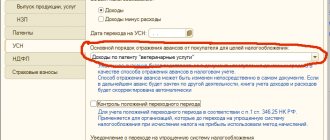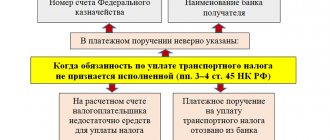What to start from
Nowadays, a huge number of people and companies have their own means of transportation. This is very convenient, but requires additional costs. In addition to paying for gasoline and maintenance, each vehicle owner is required to pay tax on a specific type of vehicle. According to Russian tax legislation, the rate in a particular region should not differ from the generally accepted rate by more or less than 10 times (clause 2 of Article 361 of the Tax Code of the Russian Federation).
As a general rule, the calculation of transport tax in 2022 depends on:
- on the cost of the vehicle;
- its power;
- region of registration.
Of course, large and expensive transport always requires more capital investment. This leads to the fact that many people prefer to purchase more economical means of transportation.
What is subject to tax
To begin with, we note that in addition to passenger cars, other types of transport are also subject to the vehicle tax. These, in particular, may be (Article 358 of the Tax Code of the Russian Federation):
- air Transport;
- motorcycles, scooters, etc.;
- all types of trucks;
- water vehicles: boats, jet skis, yachts, motor ships, sailboats, etc.;
- means for moving through the snow in winter: snowmobiles, sleds, etc.
Also see “What is the tax on water transport in 2022”.
Which vehicles are not taxed?
The state does not withhold taxes for all vehicles. Those funds that are not registered in the general manner are prescribed in paragraph 2 of Art. 358 of the Tax Code of the Russian Federation. Among them:
- air transport, which is at the disposal of air ambulance and medical services;
- offshore drilling vessels;
- cargo and passenger river/sea/air transport that belong to private entrepreneurs and firms;
- passenger cars used by disabled people;
- sea and river modes of transport that are used for fishing;
- combines of all models, special vehicles (milk tankers, etc.) that are used for agricultural work;
- vehicles that have been stolen (if the fact of theft is confirmed);
- boats with oars or motor boats with an engine up to 5 hp;
- transport that appears in the Russian International Register of Ships.
Calculation mechanism
A detailed calculation of the transport tax takes into account the circumstances specified in Art. 362 Tax Code of the Russian Federation. So, if intermediate reporting periods are defined in a particular region of Russia, then an advance must be paid to the treasury for each quarter, and the balance of the tax is paid at the end of the year. If there is no reporting quarter, then the amount is paid one-time at the end of the year.
By the way, the cost of transport tax in Crimea is calculated according to a similar scheme (advance payments are established).
Also see "Transport Tax: Advance Payments in 2022."
How to apply an increasing coefficient for transport tax
The list of passenger cars with an average cost of 3 million rubles, subject to use in the next tax period, is posted no later than March 1 of the next tax period on the official website of the Ministry of Industry and Trade of the Russian Federation on the Internet. This follows from paragraph 2 of Art. 362 Tax Code of the Russian Federation. The cost of the car and the moment of its registration do not play a role.
Particular attention should be paid to the last column of the list, which indicates the age of the car, which is calculated from the year of manufacture. For example, a car that was released in 2016 is 1 year old in 2016, 2 years old in 2022, etc. (letter of the Ministry of Finance of the Russian Federation dated May 18, 2017 No. 03-05-04/30334, Federal Tax Service of the Russian Federation dated March 2, 2015 No. BS-4-11 / [email protected] ).
If there is a car on the list, but its age is different, the increasing factor is not applied (letter of the Federal Tax Service of the Russian Federation dated January 11, 2017 No. BS-4-21/149).
If your car is on the list, then for 2022 you will pay tax with an increasing coefficient.
| Group of cars according to the list | Year of car manufacture | Kp coefficient |
| From 3 to 5 million rubles. | 2017 | 1,5 |
| 2016 | 1,3 | |
| 2015 | 1,1 | |
| Over 5 to 10 million rubles. | 2013 and later | 2 |
| Over 10 to 15 million rubles. | 2008 and later | 3 |
| Over 15 million rubles. | 1998 and later |
Formulas
The general procedure for calculating transport tax is defined in Article 362 of the Tax Code of the Russian Federation, as well as additionally in regional legislative acts on this payment.
If you do not take into account the reporting periods, the formula for calculating transport tax in 2022 is as follows:
| TOTAL AMOUNT TO PAY = TAX BASE × RATE |
But in most regions of Russia it is necessary to make interim advance payments to the treasury at the end of reporting periods. In this case, the formula for calculating transport tax takes the following form:
| ONE-TIME ADVANCE FOR 3 MONTHS = FINAL TAX / 4 |
Or:
| ONE-TIME ADVANCE FOR 3 MONTHS = TAX BASE × RATE / 4 |
The remaining amount at the end of the year = Tax base * Rate – Sent advances
To make it clear, we will give a simple example of calculating transport tax.
EXAMPLE
The Moscow organization has a truck. Its engine power is 136 hp. The tax rate for this vehicle is 26 rubles/hp. (up to 200 hp inclusive).
Thus, the annual tax for this transport is equal to:
136 hp × 26 rub./hp. = 3536 rub.
Example
In October 2022, Leonov, living in the Novosibirsk region, bought a Lada 21051 car. In September 2022, he received a notification from the Federal Tax Service to pay transport tax. How to calculate transport tax?
The initial data is presented in the table.
| Power, hp | Duration of possession | The rate established for Novosibirsk and NSO in 2015-2016 (for vehicles with a capacity of up to 100 hp), rub. |
| 59 | Less than 1 year | 6 |
Solution Leonov needs to determine the category to which the transport belongs and the power. The information received must be compared with the rates in force in the Novosibirsk region in 2017. The calculation will be as follows: 59 × 6 × (3 / 12) = 88.5 rubles. Based on NSO Laws No. 280-OZ, No. 281-OZ, No. 370 and others, Leonov must pay transport tax for last year in the amount of 89 rubles.
This must be done no later than December 1, 2017. Also see “Deadline for payment of transport tax by individuals: a reminder for motorists.”
Features of legal entities
Please note that the calculation of transport tax for legal entities in 2017 did not change significantly. To determine the amount of tax, an organization needs to count the number of months during which the vehicle was registered with it. Therefore, the ownership indicator Kv is one of the main coefficients for calculating transport tax.
As a general rule, tax must be deducted from the month the vehicle is registered until the month it is deregistered. But it happens that the vehicle changes owner, and the months are incomplete. Then the calculation is made using the possession coefficient.
So, if the vehicle was registered before the 15th, then for the new owner this month is included in the calculation of transport tax for an incomplete month of ownership. And vice versa: when the fact of registration occurs after the 15th day, then the new owner does not need to pay tax for that month.
And by analogy, the law clearly states: if a vehicle was deregistered after the 15th day, then this month is usually counted as a whole month.
Thus, the ownership coefficient (Q) is the ratio of the number of whole months during which the vehicle was registered to its owner to the total number of months in a year (for annual tax) or in a quarter (for advance tax payment).
For more information about this, see “Kv coefficient in the declaration of legal entities for transport tax in 2017.”
How to determine the transport tax rate: calculations
To determine the tax for your vehicle, you must complete the following steps:
- Clarify the indicators discussed above by correlating them with the technical data sheet.
- In the register of indicators established for the constituent entities of the Russian Federation, select a car that will correspond to the characteristics of your vehicle. It shows the rate.
The tax can be calculated in different ways, but depending on the length of ownership of the vehicle.
When a person has owned a car for one year, the standard formula is used:
S = N x K S – the amount of transport tax;
N – rate set for a specific region; K – power (in hp). If the period from registration to the date of tax payment is less than a year, the calculation is made as follows: T – the number of full months during which the vehicle belongs to the person.
Keep in mind: the transport tax rate must be specified in the notification sent by the inspectorate. Here's how it presents the tax in question:
Advance payments
As for the calculation of advance payments for transport tax, it is made taking into account the occurrence of reporting deadlines. Namely - the 1st, 2nd and 3rd quarters.
Also see “Deadline for payment of advance payment for transport tax”.
The formula for calculating advance payments looks like this:
| AP = 1/4 × NB × NS × Kv × Kp |
Where:
- NB – tax base (for a car this is usually the engine power in hp);
- NS – tax rate;
- Kv – ownership coefficient;
- Kp – increasing coefficient.
As you can see, the calculation of the advance payment for transport tax includes a coefficient that increases its value. It applies to transport if its price is more than 3 million rubles. The list of such cars is published by the Russian Ministry of Industry and Trade on its website https://minpromtorg.gov.ru.
Also see “Increasing coefficients for transport tax”.
Current rates
As mentioned, the tax on vehicles primarily depends on the tax base and rate. So, for cars and trucks, the base is power, which is measured in horsepower.
The general rates are determined by the Tax Code of the Russian Federation (Article 361). However, there is no universal table for calculating transport tax. The fact is that in different areas the rates may be lower or higher. The limit is set to 10 times.
Rates for calculating transport tax in the table for 2022 can be found in our other material here.
Regarding the transport tax in Crimea, calculations in 2022 should be made according to the rates shown in the following table:
| Transport tax rates in Crimea | |
| Vehicle type | Rate (RUB) in 2022 |
| Passenger cars with engine power (per horsepower): | |
| up to 100 hp (up to 73.55 kW) inclusive | 5 |
| over 100 hp up to 150 hp (over 73.55 kW to 110.33 kW) inclusive | 7 |
| over 150 hp up to 200 hp (over 110.33 kW to 147.1 kW) inclusive | 15 |
| over 200 hp up to 250 hp (over 147.1 kW to 183.9 kW) inclusive | 20 |
| over 250 hp (over 183.9 kW) | 50 |
| Motorcycles and scooters with engine power (per horsepower): | |
| up to 20 hp (up to 14.7 kW) inclusive | 2 |
| over 20 hp up to 35 hp (over 14.7 kW to 25.74 kW) inclusive | 4 |
| over 35 hp (over 25.74 kW) | 10 |
| Buses with engine power (per horsepower): | #colspan# |
| up to 200 hp (up to 147.1 kW) inclusive | 10 |
| over 200 hp (over 147.1 kW) | 20 |
| Trucks with engine power (per horsepower): | |
| up to 100 hp (up to 73.55 kW) inclusive | 12 |
| over 100 hp up to 150 hp (over 73.55 kW to 110.33 kW) inclusive | 20 |
| over 150 hp up to 200 hp (over 110.33 kW to 147.1 kW) inclusive | 25 |
| over 200 hp up to 250 hp (over 147.1 kW to 183.9 kW) inclusive | 30 |
| over 250 hp (over 183.9 kW) | 40 |
| Other self-propelled vehicles , pneumatic and tracked machines and mechanisms (with each horsepower) | 5 |
| Snowmobiles , motor sleighs with engine power (per horsepower): | |
| up to 50 hp (up to 36.77 kW) inclusive | 25 |
| over 50 hp (over 36.77 kW) | 50 |
| Boats , motor boats and other water vehicles with engine power (per horsepower): | |
| up to 100 hp (up to 73.55 kW) inclusive | 20 |
| over 100 hp (over 73.55 kW) | 50 |
| Yachts and other sailing-motor vessels with engine power (per horsepower): | |
| up to 100 hp (up to 73.55 kW) inclusive | 30 |
| over 100 hp (over 73.55 kW) | 100 |
| Jet skis with engine power (per horsepower): | |
| up to 100 hp (up to 73.55 kW) inclusive | 50 |
| over 100 hp (over 73.55 kW) | 100 |
| Non-self-propelled (towed) ships , for which gross tonnage is determined (from each registered ton of gross tonnage) | 30 |
| Airplanes, helicopters and other aircraft with engines (per horsepower) | 50 |
| Airplanes with jet engines (per kilogram of thrust) | 40 |
| Other water and air vehicles without engines (per vehicle unit) | 400 |
What do transport tax rates depend on?
Certain factors influence the calculation of contributions for each type of transport.
Vehicle category
The legislation provides for differentiated rates for different categories of transport. According to Art. 361 of the Tax Code of the Russian Federation, these include:
- ground vehicles - trucks, buses, scooters, etc.;
- water - yachts, ships);
- air - helicopters, airplanes.
Sometimes it is impossible to clearly define a category. Then we recommend that you familiarize yourself with the regulatory documents:
- Classification of the UNECE Inland Transport Committee;
- GOST R 51709-2001 (State Standard Decree No. 47-st);
- Convention on Road Traffic.
Specifications
The transport tax rate for land transport depends on engine power.
It is found by the formula: P = PkW × 1.35962 P – power, measured in horsepower (hp);
PkW – power in kilowatts. The result obtained is rounded according to standard rules.
The water transport tax depends on the total capacity and vehicle unit (information should be in technical documents). In the absence of such indicators, you can also use the opinion of a respected expert in this field (see Order of the Ministry of Taxes No. BG-3-21/177).
For some types of vehicles, calculations are made for each kilogram of traction force. For example, when paying tax for a helicopter.
Date of issue
Affects the transport tax rate if such a requirement is regulated by regional regulations. Calculation features:
- calculation begins on January 1 of the year following the date of vehicle production;
- take into account the period for which payment is made;
- days – calendar days (working days, weekends and holidays are taken into account).
Environmental class
Since vehicles are a source of environmental pollution, legislative measures were adopted in 1992 to provide information on the composition of harmful substances in exhaust gases. Special codes have been developed - environmental safety standards (see table).
| Class | Explanation |
| Euro 1 | Standard controlling the level of carbon, nitrogen, hydrocarbons |
| Euro 2 | Provides for a 3-fold reduction in toxic substances compared to the first class. Some large cities restricted the entry of vehicles that did not fall under this standard. |
| Euro 3 | Contains information about the content of harmful substances not only for passenger cars, but also for vehicles with diesel engines. Compared to the previous class, there should be 30 - 40% less harmful substances. |
| Euro 4 | It has more stringent requirements for the level of exhaust gas toxicity - up to 40%. Valid for six years. |
| Euro 5 | A modern standard introduced 8 years ago for trucks and cars imported from the European Union. |
The environmental class is clarified during the process of purchasing a vehicle and preparing the relevant documents. It must be indicated in the technical passport. But if such information is not available, you can use the databases on the Rosstandart website.







